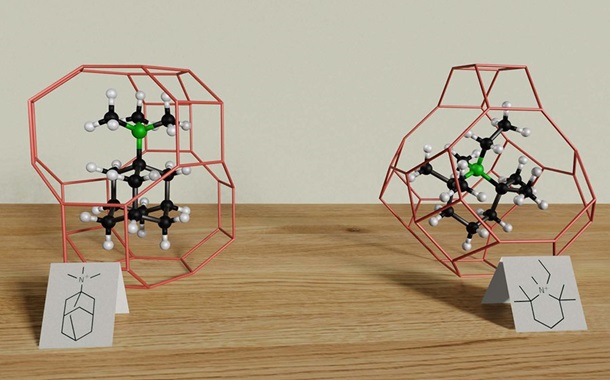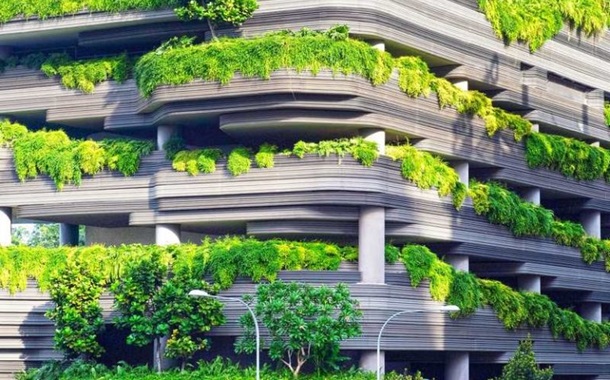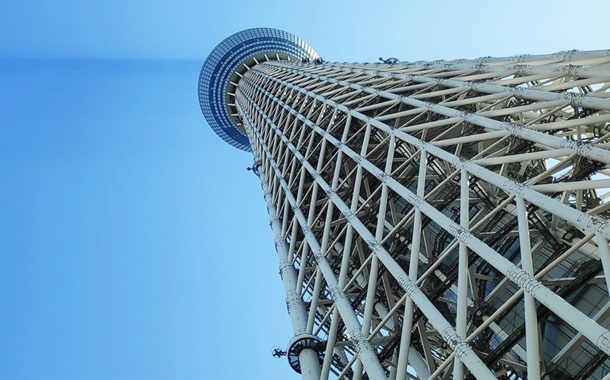Eco-Friendly Materials for Temporary Use in Architecture and Decorations
Downloads
Doi:10.28991/HIJ-2025-06-01-06
Full Text:PDF
Downloads
Gamage, A., Thiviya, P., Liyanapathiranage, A., Wasana, M. L. D., Jayakodi, Y., Bandara, A., Manamperi, A., Dassanayake, R. S., Evon, P., Merah, O., & Madhujith, T. (2024). Polysaccharide-Based Bioplastics: Eco-Friendly and Sustainable Solutions for Packaging. Journal of Composites Science, 8(10), 413. doi:10.3390/jcs8100413.
Jayarathna, S., Andersson, M., & Andersson, R. (2022). Recent Advances in Starch-Based Blends and Composites for Bioplastics Applications. Polymers, 14(21), 4557. doi:10.3390/polym14214557.
Adebowale, S. (2024). Green architecture: Embracing bioplastics for sustainable design. Samjades Building Construction (NIG LTD), Lagos, Nigeria. Available online: https://sameerabuildingconstruction.com/green-architecture-embracing-bioplastics-for-sustainable-design/#google_vignette (accessed on February 2025).
Bioplastics Magazine. (2021). Bioplastics in home construction and design. Bioplastics Magazine, Mönchengladbach Germany. Available online: https://www.bioplasticsmagazine.com/en/news/meldungen/20210521-Bioplastics-In-Home-Construction.php (accessed on February 2025).
Ajala, E. O., Ighalo, J. O., Ajala, M. A., Adeniyi, A. G., & Ayanshola, A. M. (2021). Sugarcane bagasse: a biomass sufficiently applied for improving global energy, environment and economic sustainability. Bioresources and Bioprocessing, 8(1), 87. doi:10.1186/s40643-021-00440-z.
Oliveira, P. R., Ribeiro Filho, S. L. M., Panzera, T. H., Christoforo, A. L., Durí£o, L. M. P., & Scarpa, F. (2021). Hybrid polymer composites made of sugarcane bagasse fibres and disposed rubber particles. Polymers and Polymer Composites, 29(9), S1280–S1293. doi:10.1177/0967391120943459.
Durí£o, L. M. P., Matos, J. E., Alves, J., Filho, S. M. R., Panzera, T. H., & Scarpa, F. (2023). Experimental Study of Drilling Damage Outcomes in Hybrid Composites with Waste Micro-Inclusions. Materials, 16(23), 7325. doi:10.3390/ma16237325.
Rezende, C. A., De Lima, M., Maziero, P., Deazevedo, E., Garcia, W., & Polikarpov, I. (2011). Chemical and morphological characterization of sugarcane bagasse submitted to a delignification process for enhanced enzymatic digestibility. Biotechnology for Biofuels, 4, 54. doi:10.1186/1754-6834-4-54.
Ferreira, D. P., Cruz, J., & Fangueiro, R. (2019). Surface modification of natural fibers in polymer composites. Green Composites for Automotive Applications, 3-41. doi:10.1016/B978-0-08-102177-4.00001-X.
Jannah, M., Mariatti, M., Abu Bakar, A., & Abdul Khalil, H. P. S. (2009). Effect of chemical surface modifications on the properties of woven banana-reinforced unsaturated polyester composites. Journal of Reinforced Plastics and Composites, 28(12), 1519–1532. doi:10.1177/0731684408090366.
Wulandari, W. T., Rochliadi, A., & Arcana, I. M. (2016). Nanocellulose prepared by acid hydrolysis of isolated cellulose from sugarcane bagasse. IOP Conference Series: Materials Science and Engineering, 107(1), 12045. doi:10.1088/1757-899X/107/1/012045.
Sallehuddin, N. J., & Ismail, H. (2020). Treatment's Effect on Mechanical Properties of Kenaf Bast/Natural Rubber Latex Foam. BioResources, 15(4), 9507–9522. doi:10.15376/biores.15.4.9507-9522.
Ma, Y., Wang, C., & Chu, F. (2017). Effects of fiber surface treatments on the properties of wood fiber-phenolic foam composites. BioResources, 12(3), 4722–4736. doi:10.15376/biores.12.3.4722-4736.
Njom, A. E., Mewoli, A., Ndengue, M. J., Ebanda, F. B., Nitidem, A. D., Otiti, S. B., ... & Ateba, A. (2022). Hybrid composite based on natural rubber reinforced with short fibers of the triumfetta cordifolia/saccharum officinarum L.: performance evaluation. Journal of Minerals and Materials Characterization and Engineering, 10(5), 385-399. doi:10.4236/jmmce.2022.105027.
Zimmer, A., & Bachmann, S. A. L. (2023). Challenges for recycling medium-density fiberboard (MDF). Results in Engineering, 19, 101277. doi:10.1007/s00107-018-1326-8.
Kabir, M. M., Wang, H., Lau, K. T., & Cardona, F. (2012). Chemical treatments on plant-based natural fibre reinforced polymer composites: An overview. Composites Part B: Engineering, 43(7), 2883–2892. doi:10.1016/j.compositesb.2012.04.053.
Thakur, V. K., & Thakur, M. K. (2014). Processing and characterization of natural cellulose fibers/thermoset polymer composites. Carbohydrate Polymers, 109, 102–117. doi:10.1016/j.carbpol.2014.03.039.
Xue, Y., Lofland, S., & Hu, X. (2019). Thermal conductivity of protein-based materials: A review. Polymers, 11(3), 565–576. doi:10.3390/polym11030456.
Hiziroglu, S. (2010). Oriented strand board as a building material. Oklahoma Cooperative Extension Service, Oklahoma, United States. Available online: https://openresearch.okstate.edu/server/api/core/bitstreams/05f0c6ff-56a3-48b5-8e76-7d7c186372c6/content (accessed on February 2025).
Bartos, A., Kócs, J., Anggono, J., Móczó, J., & Pukánszky, B. (2021). Effect of fiber attrition, particle characteristics and interfacial adhesion on the properties of PP/sugarcane bagasse fiber composites. Polymer Testing, 98, 106273. doi:10.1016/j.polymertesting.2021.107189.
Maharana, S. M., Samal, P., Dehury, J., & Mohanty, P. P. (2020). Effect of fiber content and orientation on mechanical properties of epoxy composites reinforced with jute and Kevlar. Materials Today: Proceedings, 26, 273-277. doi:10.1016/j.matpr.2019.11.239.
Ramachandran, A., Mavinkere Rangappa, S., Kushvaha, V., Khan, A., Seingchin, S., & Dhakal, H. N. (2022). Modification of fibers and matrices in natural fiber reinforced polymer composites: A comprehensive review. Macromolecular rapid communications, 43(17), 2100862. doi:10.1002/marc.202100862.
Wang, C., Li, K. Z., Li, H. J., Jiao, G. S., Lu, J., & Hou, D. S. (2008). Effect of carbon fiber dispersion on the mechanical properties of carbon fiber-reinforced cement-based composites. Materials Science and Engineering: A, 487(1-2), 52-57. doi:10.1016/j.msea.2007.09.073.
Osugi, R., Takagi, H., Liu, K., & Gennai, Y. (2009). Thermal conductivity behavior of natural fiber-reinforced composites. Proceedings of the Asian pacific conference for materials and mechanics, Yokohama, Japan.
Nirmal Kumar, K., Dinesh Babu, P., Surakasi, R., Kumar, P. M., Ashokkumar, P., Khan, R., ... & Gebreyohannes, D. T. (2022). Mechanical and thermal properties of bamboo fiber–reinforced PLA polymer composites: a critical study. International Journal of Polymer Science, 2022(1), 1332157. doi:10.1155/2022/1332157.
Ashori, A. (2008). Wood-plastic composites as promising green-composites for automotive industries! Bioresource Technology, 99(11), 4661–4667. doi:10.1016/j.biortech.2007.09.043.
- This work (including HTML and PDF Files) is licensed under a Creative Commons Attribution 4.0 International License.






















